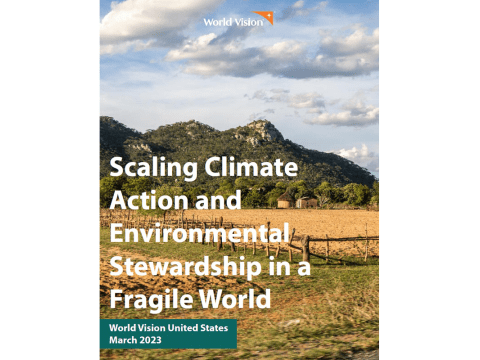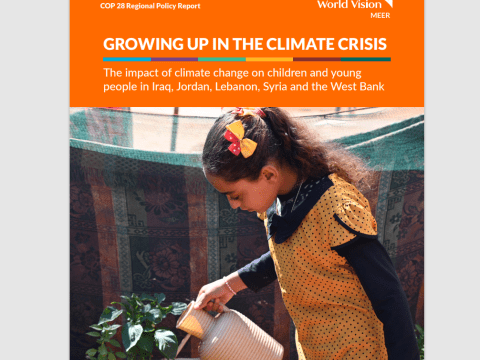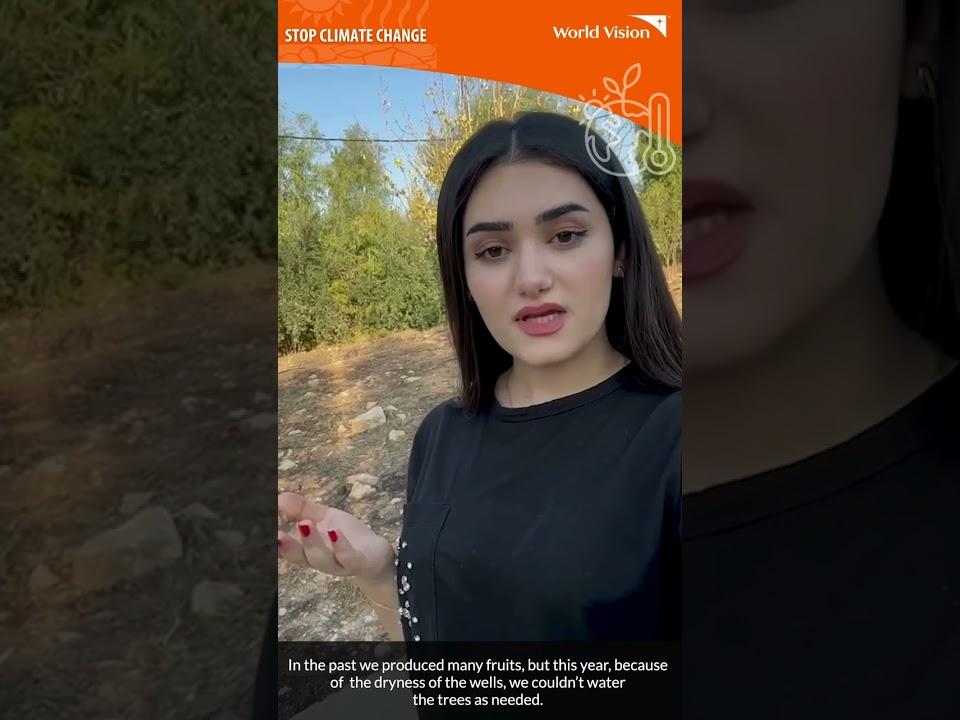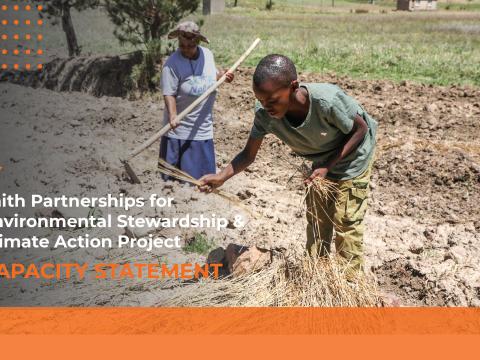RISING STORMS Climate impacts on conflict, community tensions, and hunger
Download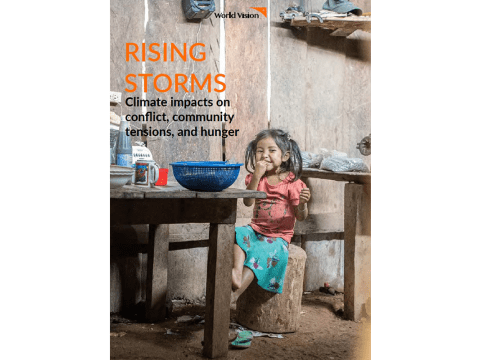
This research uses field data from a survey of almost 3000 people in nine countries to hear from them how climate hazards are fuelling conflict, displacement, and food insecurity, in a wider range of contexts than commonly thought.
Overall, 86% respondents believe climate change poses a serious issue for their communities. Many communities were not just experiencing a single impact of climate change, but multiple hazards simultaneously. In the Dry Corridor of Central America (Nicaragua, Guatemala, Honduras, and El Salvador) respondents spoke of ‘drought, hurricanes, floods, and storms’, while in Puttalam, Sri Lanka they were affected by ‘drought, monsoon and floods’. The most common concerns were drought (57%), rainfall pattern changes (48%), and heat waves (42%). Over half (51%) of survey respondents reported that reduced access to food and water was a key impact of climate hazards, while 57% completely agreed that climate change increased the risk of hunger/food insecurity. Reduced food supplies force people to skip meals or eat foods with lower nutritional levels, which in turn drives higher levels of malnutrition, starvation and in some cases leads to instances of famine.
As crop yields are reduced through crop damage, land degradation, and water supply issues, among others, and production costs increase the price of agricultural and pastoral outputs, families struggle to make ends meet. When asked how they were negatively affected by climate change, three-quarters of respondents (72%) mentioned livelihood-related impacts, including ‘loss of livelihoods’, ‘reduced pastureland’, ‘crop failure’, and ‘difficulty accessing water/food’. Even more – 82% of respondents – agreed with the statement ‘climate change worsens my economic situation’.
“Climate’s variability, and the increasing frequency of hazards, majorly impacts their [households] economy...When we have enough money to spend and do things, the conflicts are less. When money is less, conflicts are going to happen.” – Climate Change Expert, Sri Lanka
Of respondents, 60% thought climate change specifically worsened conflict in their communities and 61% agreed that ‘if the negative impacts of climate change increase, conflict in my area will increase too’. Pressures on natural resources are exacerbated by climate change; crop yields are reduced, land is degraded, and water supplies are diminished and contaminated. Such pressures can create conflict within communities and between communities as land boundaries, access to water, pasture and dwindling resources are contested and public services are stressed further.
Interviewees and survey responses in all six case study locations cited issues associated with water and land as key conflict drivers. When asked the cause of environment and climate-related conflict in their community, 38% said it was due to water shortages. Corruption (20%) and displacement (17%) were the next most common answers. More than twice as many respondents reported water-linked disputes than ethnic or sectarian disputes. One climate change specialist in the Dry Corridor reflected that ‘many experts predict that the next world war will not be over oil, but over water. Water is directly related to climate change’.
Respondents agreed almost universally (99%) that climate change leads to displacement either from or to their community. Families displaced by the effects of climate change often arrive in urban areas already facing resource pressures due to ongoing urbanisation, where host populations are struggling to absorb large numbers of new arrivals and often have to do so with limited support. Displacements undermine social cohesion in the host community as well as in the displaced population as they seek to survive and make relationships between the two groups difficult.
This pattern was reaffirmed by a security expert in the Dry Corridor, ‘because there is no land and the means of production has been affected, people have to go around invading and have to settle in places where there is no legality...This generates any number of conflicts, and...there is no stability or security.’ In addition to climate change contributing to conflict, conflict can also cause environmental degradation, which can in turn worsen communities’ exposure to climate impacts. In the Dry Corridor, Centre Est, Burkina Faso, and Anbar, Iraq, conflict has led to faster rates of deforestation contributing in places to desertification and increased temperature levels.
A local government official in Anbar aptly described the impact of conflict on the environment stating that: "Conflict can lead to significant environmental damage, including the destruction of infrastructure, forests, and agricultural land. The release of greenhouse gases from the burning of buildings and vehicles...can contribute to climate change and can hinder efforts to manage and protect natural resources...illegal logging and poaching can increase in conflict zones, contributing to deforestation and loss of biodiversity."
As the findings of this research make clear, the world must act at COP28 and beyond. Leaders from high income countries must fulfil the US$100 billion annual climate financing commitment to lower-income countries, and although a ‘loss and damage’ fund has now been agreed, its size, scope and governance is yet to be determined. Donors, international non-governmental organisations, and governments alike must ensure that climate action does not aggravate existing flashpoints and supports peace. And it is urgent that every global citizen make efforts to limit emissions so that collectively the world gets on track to limit climate change and meet the aspiration of limiting temperature increases to 1.5°C, as set out in the 2015 Paris Agreement.
Without ambitious action to limit global warming and help countries find conflict-sensitive adaptation strategies, we will struggle to protect children and achieve the Sustainable Development Goals (SDGs). The global community’s current inadequate action on climate is disrupting livelihoods and education, increasing hunger and malnutrition and increasing risks of violence against children.
